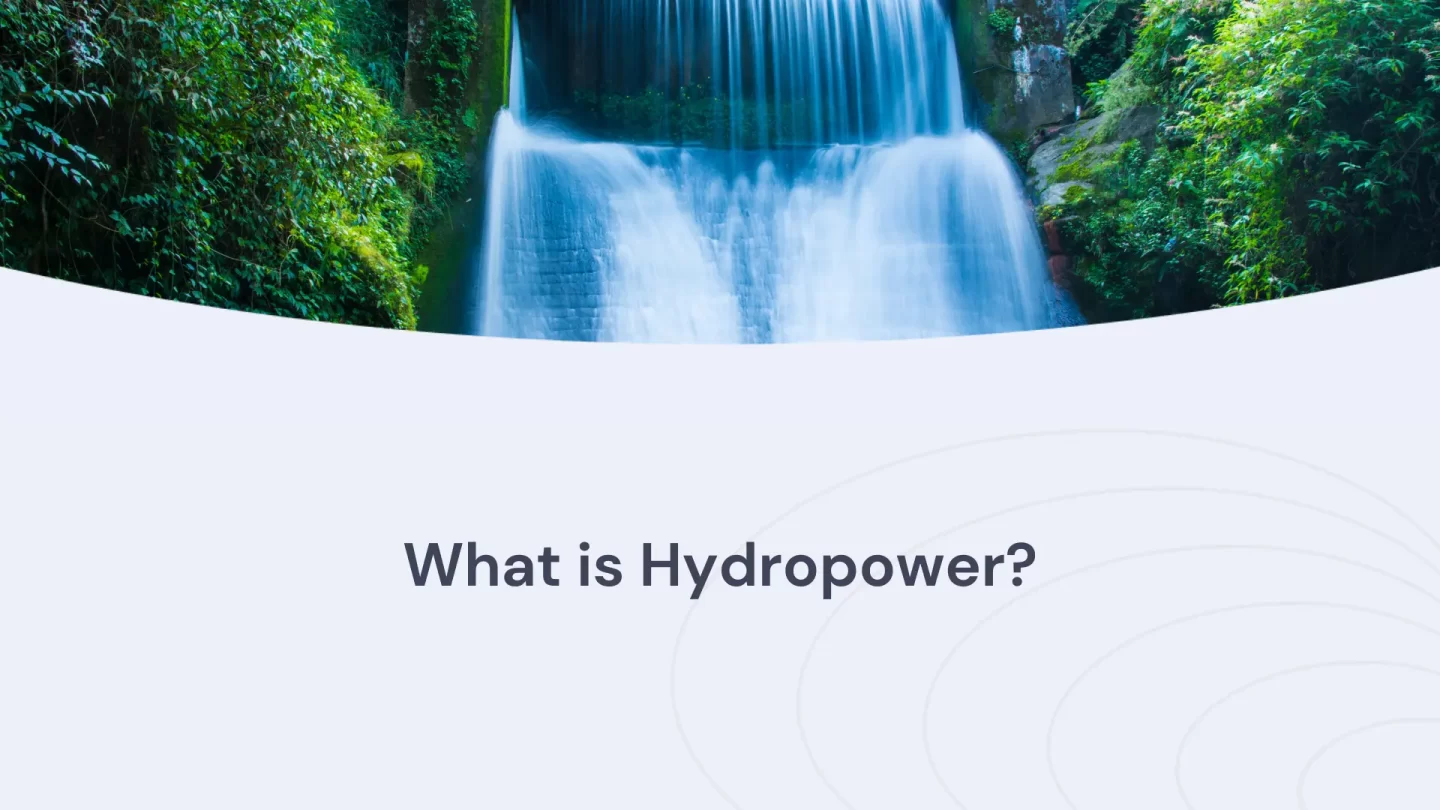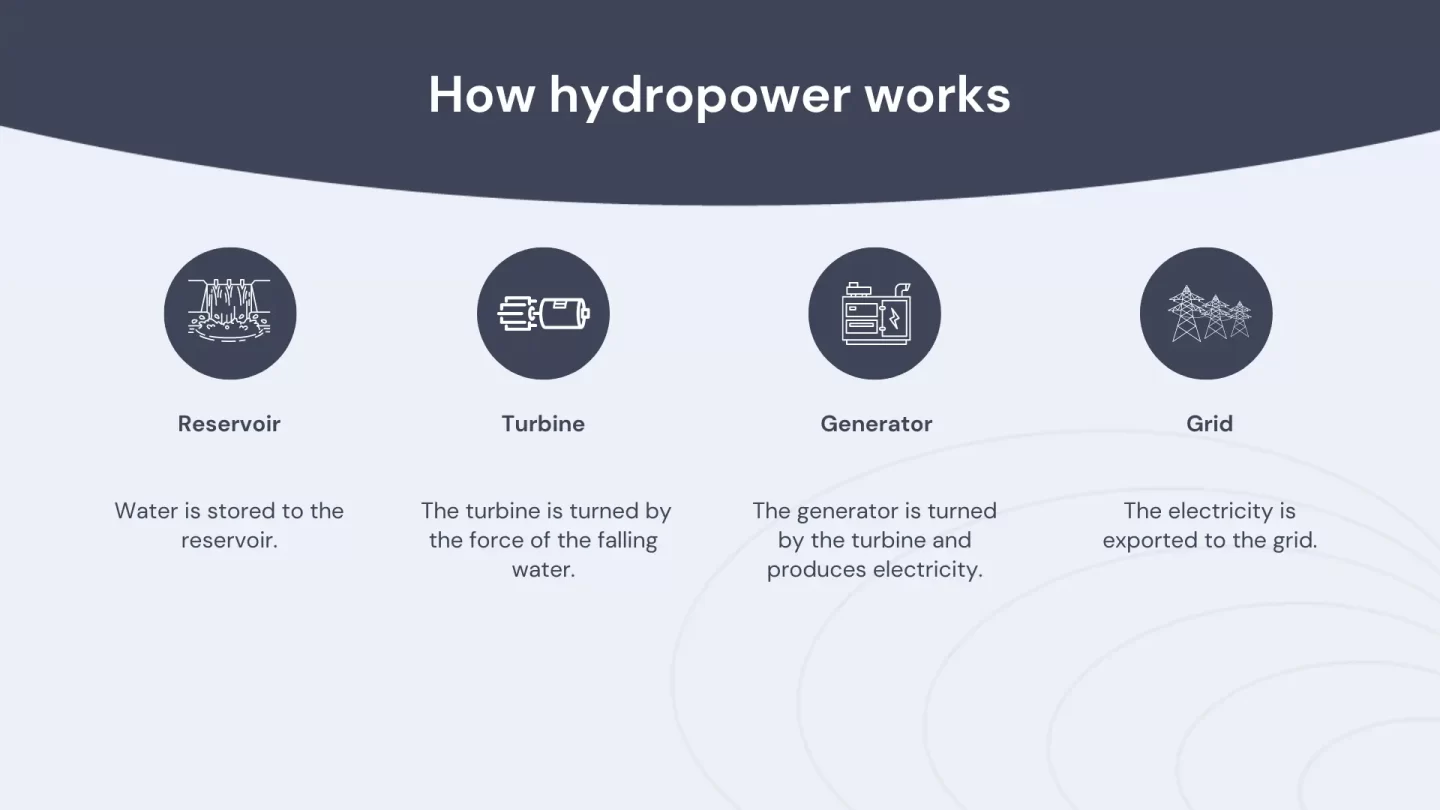Introduction
Hydroelectric power, also known as hydropower, is a sustainable and renewable source of energy derived from the movement of water. Notably, this clean energy technology harnesses the kinetic energy of flowing or falling water to generate electricity. Hydropower is a traditional and widely used method of generating electricity and contributes significantly to the world’s electricity production.

The mechanics of hydropower
Hydroenergy works on a simple principle: converting the potential energy stored in standing or flowing water into electricity. This process involves the following key components:
Water reservoirs
Large reservoirs or natural bodies of water are strategically located at higher elevations to store water.
Dams or barrages
Dams or barrages are constructed to control the flow of water from the reservoir. The controlled release of water ensures a consistent and controlled power generation process.
Turbines
As water is released, it flows through turbines, causing them to rotate. The kinetic energy of the flowing water is converted into mechanical energy.
Generators
The spinning turbines are connected to generators that convert the mechanical energy into electricity.
Power Grid
The generated electricity is then transmitted through a power grid to homes, industries, and businesses.

The graphic above illustrates the generation of hydropower using a reservoir, turbines, generators, and grids. Source.
Types of hydropower systems
Hydroelectric Dams
Large-scale hydroelectric projects often involve the construction of dams. These dams create large reservoirs that provide a steady supply of water for power generation.
Run-of-river systems
Unlike dams, run-of-river systems do not require large reservoirs. Instead, they utilize the natural flow of rivers by passing water through turbines to generate electricity.
Tidal and wave energy
Hydro electricity extends beyond freshwater sources. Tidal and wave energy harnesses the power of ocean tides and waves, respectively, to generate electricity.
Environmental benefits of hydropower
Renewable
Hydropower is a renewable resource as long as the hydrologic cycle is maintained.
Low Greenhouse Gas Emissions
Hydroelectric power generation produces minimal greenhouse gas emissions compared to fossil fuel-based energy sources.
Water Conservation
Hydropower projects often incorporate water management strategies, contributing to water conservation efforts.
Challenges and considerations of hydropower
Environmental impacts
Large dam projects can have ecological consequences, affecting local ecosystems and fish habitats.
Geographic limitations
Hydropower requires suitable geographic features, which limits its applicability in certain regions.
Conclusion
Hydropower is a cornerstone in the quest for sustainable and clean energy generation. With its ability to harness the natural flow of water, hydro electricity plays a vital role in diversifying the energy mix and reducing dependence on non-renewable sources. As technology advances and environmental concerns increase, hydropower continues to play a key role in the global transition to a greener and more sustainable energy future.
Frequently asked questions
How does hydropower contribute to renewable energy?
As it is a renewable energy source because it relies on the continuous movement of water, driven by natural processes such as rainfall and snowmelt. That is why, maintaining these water cycles ensures that hydropower continues to be a sustainable and environmentally friendly solution for generating electricity.
How does hydropower address environmental concerns?
Hydro electricity has several environmental benefits, including minimal greenhouse gas emissions during electricity generation compared to fossil fuels.
What challenges does hydropower face, and how are they addressed?
One notable challenge is the environmental impact of large dam projects, which can affect local ecosystems and fish habitats. So to address this, engineers are implementing advances in dam design and environmental mitigation measures to minimize ecological impacts.







